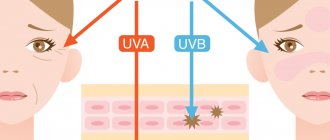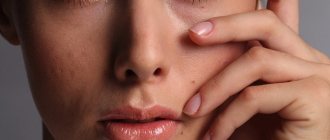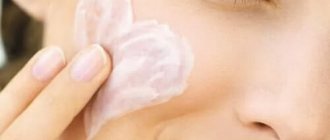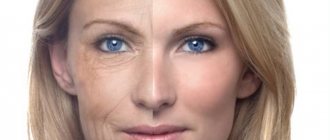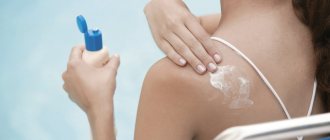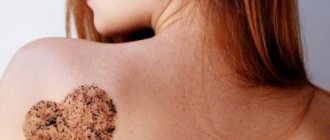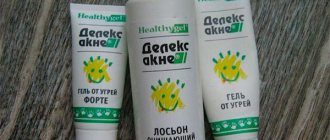We'll tell you how to choose a good sunscreen according to your skin type, what spf number should be on the package, how often you need to apply the cream, and what products cosmetologists recommend.
Our skin needs protection not only when the sun is shining brightly. The sun's rays can “reach” us both in the city and even through dense clouds.
There are two types of ultraviolet rays: B (UVB) and A (UVA). The former make up about 5% of all rays reaching the surface of the Earth - they are responsible for tanning, but also cause burns.
The remaining 95% are the most insidious - ultraviolet A rays, which are invisible because they do not burn, but penetrate into the deeper layers of the skin, leading to photoaging. They are also the culprits of “sun allergies”.
To protect the skin, cosmetics with SPF (sun protection factor) were developed. The World Health Organization recommends using sunscreen when the UV index is above 2.
It turns out that you need to use Sunscreen during the entire period of active sun (spring and summer). Even in cloudy weather. And even for those who are in the office: they work near the window and receive direct sunlight (glass transmits type A UV rays - they cause photoaging of the skin and atrophy of subcutaneous adipose tissue).
Sunscreen is recommended for everyone, regardless of skin type and tone. Even if our skin already has a very dark tan, we still need protection from UV rays.
It is sunscreen that protects us from skin cancer and prevents photoaging. Also, many modern Sanskrin products fight already established pigmentation.
Types of sun rays and their effects on the skin
Ultraviolet rays are divided into 3 types:
- UVA rays (length – 320-400 nm). They are divided into long ones - UVA1 and short ones - UVA2. Reach the surface of the Earth. They are able to penetrate the upper and deep layers of the epidermis. In addition, UVA rays change the structure of DNA, increase the likelihood of genetic mutations and can cause skin cancer. They lead to hyperpigmentation, freckles, increased dryness of the skin and photoaging, and destroy elastin and collagen fibers. Such rays actively participate in tanning and cause burns. They are active at any time of the year. Solarium lamps emit UVA rays, which threatens structural changes in the skin.
- UVB rays (length – 280-320 nm). Reach the surface of the earth. Ultraviolet B rays penetrate only the upper layers of the skin, causing burns. They lead to photoaging and are considered a provoking factor in the development of skin cancer and eye damage. Maximum activity of UVB rays occurs from March to October, from 10 a.m. to 4 p.m.
- UVC rays (length – 100-280 nm). They have the strongest damaging effect on the body, but they are adsorbed by the ozone layer, so they do not reach the surface of the earth.
Types of creams with SPF protection
The stores offer the following products with SPF protection:
- Moisturizing . They combine both protection from solar radiation and basic care properties. They are distinguished by a light texture that does not leave white streaks or unpleasant stickiness on the skin. These moisturizing creams with spf are used in the morning as a base for makeup. The moisturizing effect is achieved due to the non-comedogenic oils, plant extracts and antioxidants included in the composition.
- Tonal . They perfectly mask all kinds of imperfections of the skin, and the filters included in the product protect the epithelium from harmful ultraviolet radiation. The main function of a decorative cream is to smooth out the relief, improve complexion and hide existing imperfections.
- BB creams . Unlike dense tonal textures, they have a lighter consistency. At the same time, in addition to masking and evening out the tone, they also take care of the facial skin. Enriched with various vitamins and nutrients that have a beneficial effect on the sensitive epidermis.
- Beach . They often contain both physical and chemical filters. This combination allows you to create an effective sunscreen with a water-repellent effect. As a result, the skin is protected not only during exposure to the sun, but also during bathing.
- From pigment spots. Creams with protection against sun and age spots are characterized by their whitening properties. Recommended by dermatologists as sun protection after using acid peels and other cosmetic procedures that can cause pigmentation.
You need to know your skin type to choose a cream that suits you.
To keep your eyes from wandering among the huge variety of products presented, we have compiled a rating of the most effective products with spf factor 30.
What is important to know about solar radiation
A reasonable dosed amount of ultraviolet rays is beneficial and necessary for the human body. It's important not to overdo it. Prolonged exposure to the sun without a protective agent damages the lipid barrier and immune system, slows down microcirculation, provokes dryness, hyperkeratosis and photoaging, while the complexion becomes dull and wrinkles appear. The dose of solar radiation accumulates in the body throughout life. Severe burns are especially harmful when blisters form on the skin.
Some more useful tips...
- Large amounts of solar radiation are contraindicated for young children.
- It is better to hide infants completely from the sun.
- Always apply SPF before going out into the sun.
- Body creams are not always suitable for the face. Almost never fit.
- Products with SPF are best used all year round. Only vary the intensity level of this protection.
- When using acids in facial care, having a sunscreen on top of your day cream is a must!
- It is not enough to apply tanning product only once if you are in the open sun on vacation. It is necessary to update the layer after swimming, for example.
- Adult products are not suitable for children.
- Monitor the expiration dates and proper storage of products in this segment in cosmetic bags.
- Don't forget about lips, ears and other areas of the body.
- Hair also needs protection from radiation. At a minimum, this is a headdress. At the most, a special hair product.
- Avoid excessive sun exposure during peak activity hours. It is better to sunbathe before 12 and after 15 hours.
- Drink more water and stay hydrated.
- Tanning activators for solariums are dangerous to use in the open sun!
By the way, an alternative to regular tanning in the sun is still the use of self-tanning. Its components only color the skin without penetrating into the deeper layers.
A budget self-tanner for legs from the Sun Look brand will help out if you urgently need to get a spectacular skin tone). The brand is presented exclusively in Podruzhka stores.
So, if you don’t lose your head, approach your sun exposure wisely and choose sunscreens wisely, you will be able to avoid skin problems at the moment and in the future! The main thing is to understand what SPF is and what functions it performs.
What is SPF
SPF or Sun Protection Factor is an indicator that determines how much a product can protect the skin from sunburn. The higher the sun protection factor of the cream, the better the protection.
There are 3 levels of protection:
- basic – from 2 to 10 SPF;
- medium – from 15 to 25 SPF;
- high – from 30 to 100 SPF.
The higher the SPF level, the thicker and thicker the sunscreen will be. Day creams usually contain SPF from 8 to 30. For the city, the optimal value for summer is from 15 to 30; in winter, a product with a basic level is sufficient. In hot climates, near the sea, in the mountains, if you have pigmentation or are undergoing a course of chemical peels, you should choose a cream with an SPF of 30 or more. Serums do not contain SPF, so it is recommended to use sunscreen in addition to the serum every morning. It is important to remember that it should not be applied overnight, especially if it contains chemical filters. You need to choose a cream without filters or make a moisturizing mask.
To calculate the ability of a product to protect the skin from ultraviolet radiation, studies are conducted that compare the skin with and without sunscreen applied. They help determine the time when the skin turns red. Scientists in special laboratories carry out calculations, focusing on the fact that the sunscreen will be applied in an amount of 2 mg per 1 square meter. cm skin surface. To obtain reliable results, studies are performed with different skin phototypes.
Why use creams with spf factor
What is foundation with SPF factor? This is cosmetics that not only evens out skin tone, but also protects it from the negative effects of environmental factors. The foundation contains filters that reflect or neutralize dangerous ultraviolet rays, preventing them from penetrating deep into the epidermis.
People with sensitive skin prone to sunburn are advised to choose foundations with SPF filters. Under the influence of sunlight, skin cells quickly lose moisture and die, premature wrinkles appear, the skin loses firmness and elasticity, moles and age spots grow, and skin cancer can also develop. That is why, especially in the summer, you need to use cosmetics with SPF filters.
How to choose the right sunscreen in winter
During the cold season, many people consider it useless to use a cream with ultraviolet protection. But it is important to consider several factors.
A day spent at a ski resort is equivalent to being on a hot summer day on the seashore. Accordingly, when relaxing in the mountains in winter, you need to use a sunscreen with SPF 30-40. Also, don't neglect your sunscreen lip balm.
In urban environments, you should also not forget about protecting your skin from ultraviolet radiation. The sun's rays penetrate through the windows of houses and office buildings, and therefore affect the skin during the working day. Before you buy a protective cream, you need to check which decorative cosmetics contain UVA-UVB filters. If they are present, then you should choose a cream with SPF 10-15.
Dry and cold weather weakens the protective functions of the skin; it becomes hypersensitive to the effects of ultraviolet radiation. It is recommended to choose a moisturizer with ceramides and SPF filters. It must be applied in a thick layer.
When purchasing a sunscreen, you need to pay attention to the presence of the abbreviations UVA and UVB on the packaging - protection against rays A and B.
Melanoma or golden tan - the choice is yours!
The benefits of sunlight have been known since time immemorial. However, unfortunately, a golden and even tan can bring with it a couple of “unattractive friends” - diseases. Melanoma is one of them.
Read more
— Dry and sensitive skin . Owners of this type will benefit from cream products or lotions that will deeply nourish, moisturize, and, of course, protect from the sun. Very often, people with dry skin are more vulnerable to the sun, and therefore the skin can begin to peel very quickly. It is recommended to choose a cream that is thicker and thicker in texture, as well as a cream with the highest degree of protection.
In this article you will find information on the selection of sunscreens for children.
How to Apply Sunscreen Properly
Dermatologists recommend updating the weather app on your mobile device before applying sunscreen. It displays the ultraviolet index (UV Index). If the index is less than 2, then there is no need to apply sunscreen. A mark from 2 to 4 means that the cream should only be applied if staying outside will take more than 30 minutes. An indicator from 4 to 6 indicates that you need to treat the skin with a product with SPF 15-20. If the mark exceeds 6, be sure to apply cream before going outside.
Everything you need to know about SPF: how to choose the right sun protection?
Speaking about Sanskrins, first of all you need to understand that they are not needed to sunbathe for hours and not burn. Their purpose is to enhance protection during forced stay in direct sunlight. Let's figure out together how to choose the right sunscreen. Every year the cosmetics industry develops, many additional abbreviations and designations appear on packaging. We invite you to delve deeper into this topic.
What does SPF mean?
SPF is a designation for sun protection factor. The numbers next to it show how much ultraviolet radiation you can receive without the risk of negative consequences.
For example, if a product says SPF30, this means that your skin will absorb 30 times more sun without harm than without the product. Let's explain with a specific example: if your unprotected skin can burn in the sun in 10 minutes, then SPF15 cream will give you protection for about 150 minutes, which is 15 times longer than your phototype should.
When to apply SPF protection?
Sunscreens should be applied when the UV index is 3 or higher. At the same time, if you just need to walk to the store or the metro and it takes no more than 15 minutes, then you can do without protective cream. Provided that you are not at risk of skin diseases.
And if you are at a resort or spend a long time outside during the daytime, you definitely need a cream with SPF 20-30+. Even if you have already tanned a little at the dacha or visited a solarium. Dark skin needs the same regular sun protection as fair skin.
How to find out the ultraviolet index?
UV index is an indicator of the level of ultraviolet radiation introduced by WHO. It is measured daily and warns about the need to use sunscreen.
There are convenient weather apps and websites that show the UV index for each city every day. And if you doubt whether sun protection is needed, you can turn to this service.
The index is below 2 - you can go out without protective cream, even if you are planning walks in the fresh air.
Index 2–4, and you will be outside for more than 15 minutes, then you need to apply a product with SPF 15+ protection.
Index from 4 to 6 - you must use a product with SPF 20–25 or more.
Index above 6 - you should not go outside without a protective product with SPF 30+; you can also apply it if you will be in front of windows for a long time.
What types of UV filters are there?
There is a division into chemical and physical filters; they have different operating principles.
Chemical ones absorb UV rays, while physical ones can reflect them, like an umbrella. The latter include natural ones - zinc oxide, hydroxyapatite, titanium dioxide.
In cosmetology, chemical filters, along with fragrances and dyes, are considered the most allergenic. According to the latest data, they can not only irritate the skin, but also accumulate in the body. Another dangerous point is that chemical filters have a hormone-like effect on fish and shellfish. It has not yet been fully studied whether chemical filters affect the human body, but it can no longer be called a useful filter.
In Onme creams with SPF protection, we use the safest physical filters: zinc oxide and hydroxyapatite. They create a reliable protective barrier, prevent sunburn and premature aging, and provide pleasant and safe sun exposure for dark and tanned skin. Physical filters work faster - after application to the skin they provide protection. They are convenient to renew during the process. They differ from chemical ones in their stability in cosmetics and in the sun.
How do physical UV filters work?
Creams based on physical filters are located only on the surface of the skin and do not penetrate the body. When we apply them to the skin, we create a protective shell that, like a shield, repels solar radiation. Previously, such creams were not very popular for their whitish tint. But modern filters (for example, hydroxyapatite) can adapt very well to skin color without leaving strong white streaks.
Sun protection factor indicators
SPF is a measure used to indicate protection against UVB rays.
SPF 15 blocks 93% of UV rays, but 7% still penetrates the skin.
SPF 30 - 97% UV rays.
SPF 50 and above - 98% of UV rays.
PA is a rating used to indicate protection against UVA rays.
PA+ - minimum protection
PA++ - moderate
PA+++ - strong
In our line, SPF30 and SPF50 creams have PA+++, and SPF15 cream has PA++.
How to choose?
Sunscreen is an important part of preventing melanoma and premature aging. But the cream must be selected taking into account many features.
- Skin phototype - the lighter it is, the higher the sunscreen SPF should be
- Time of year and day - during the daytime, UVB rays are more active; in summer and spring, you need to choose a higher sun protection factor
- Geography - closer to the equator there is a higher risk of sunburn
- Weather conditions - in clear weather the rays penetrate more intensely
First of all, you need to determine which phototype you belong to.
1. Celtic - the lightest hair and skin, many freckles, blue or green eyes.
Safe exposure to the sun for this type of person is only 5 minutes; they are recommended to use a product of at least SPF 30+.
2. Nordic/Scandinavian - fair skin, light brown hair, brown or blue eyes.
You can be in the sun for about 15 minutes, then you should apply a cream with an SPF factor of 30+. In the last sunny month, it is allowed to reduce protection to SPF15+.
3.European - the most popular in the middle zone. Light skin, brown hair, dark eyes.
The maximum safe exposure to the sun is no more than 20 minutes, and SPF protection is from 15 to 20.
4. Mediterranean - dark skin, dark hair and dark eyes.
Such representatives can be in the sun without protection for as long as 30 minutes, and take protection with SPF-8-15.
You can calculate the approximate time of safe sun exposure: SPF number x time of natural skin protection from the sun (depending on the phototype). But this method is conditional; we cannot, for example, say that a Nordic-type girl with SPF30 sunscreen will stay in the sun for 600 minutes without harm to the skin. After all, when testing sun protection, it is assumed that 2 mg of cream is used per 1 square centimeter of skin. But most of us apply much less cream to ourselves, so we need to renew it regularly.
Remember that the cream does not give a 100% guarantee, and therefore there is no need to lie and “roast” in the sun, smeared with cream from head to toe. Don't let your guard down while sunbathing on the beach or cottage, or just taking a walk in the open air.
How to update?
Sun protection should be applied 20-30 minutes before leaving the house. It needs to be updated approximately every two hours. But many factors intervene here: if you actively swim, lie on the sand, dry yourself with a towel, the cream partially comes off the skin and the protection no longer works at full strength. Even if you sweat a little and wipe your face with napkins, you no longer have the necessary protective barrier. There is a false feeling that the cream is still on the body, but it no longer provides full protection. Therefore, it is better to renew the cream after all these nuances.
Apply the product to all exposed areas of the body, do not forget about the ears, back of the feet and lips. They are most often bypassed. An adult's body requires about 30 ml of product for complete protection.
Are you afraid of getting sunburned? Set a reminder on your phone or buy a special bracelet with an indicator.
Sunscreens are certainly important, but they cannot protect against UV rays alone. No cream protects your skin 100% from solar radiation, so it's important to spend time in the sun responsibly first!
Tell me, do you apply Sanskrins correctly? Which protective filters do you prefer - chemical or physical?
Can sunscreen be used continuously?
Sunscreens contain much less beneficial ingredients that have a therapeutic effect on the skin. Also, the physical filters included in the composition overload the epidermis. These include zinc oxide and titanium dioxide. It is not recommended to cover the stratum corneum daily with products containing these minerals. They slow down the rate of epidermis renewal, which already decreases with age.
If you frequently use cream with chemical filters, unwanted reactions may occur. Throughout the day, many chemical filters oxidize and change. Chemical filters themselves not only protect the skin from ultraviolet radiation, but can also have an irritating effect.
It is recommended to wear a broad-spectrum sunscreen with an SPF of at least 30 when outdoors for more than two hours at a time. Periodically you should add a portion of the cream to the face, neck, décolleté, arms, and legs.
You need to choose a sunscreen based on your skin type:
— If you have oily skin, then a cream-gel with a gel texture will undoubtedly be suitable for you. Such products, as a rule, not only protect, but also perform additional matting functions and reduce the secretion of sebaceous glands.
— For mature skin that needs special care, creams labeled anti-age are suitable. Anti-aging creams also provide good sun protection, additionally replenish moisture and reduce wrinkles.
Myths about sunscreens
Myth 1. The higher the SPF, the better the protection.
This statement applies only to products with SPF up to 50. Manufacturers produce products with degrees of protection from 2 to 100 SPF. For comparison: SPF 50 can create a barrier on the skin for 98% of ultraviolet rays, SPF 100 for 99%. In most cases, an SPF value above 50 is just a marketing ploy.
Myth 2. Protecting your skin is only necessary when the sun is scorching.
A common myth. Shade and clouds do not guarantee complete UV protection. Even when using an umbrella, a person receives 35% of solar radiation. When staying in the shade, it is recommended to use a cream with a lower SPF value.
Myth 3. For tanned and dark skin, it is enough to use creams with SPF 10 or less
Many people believe that in the last days of a holiday at sea, it is possible to use products with a minimum level of protection, since the skin has produced a sufficient amount of melanin pigment, and in dark-skinned people the skin does not need protection at all. This is a huge misconception, since dark skin, although less susceptible to sunburn, is not protected from photoaging and the risk of developing melanoma. Therefore, it is still necessary to use products with an SPF of at least 30.
Myth 4. Decorative cosmetics will help protect your skin from ultraviolet radiation.
Half true statement. Foundations can protect the skin from sun radiation, but powder will not cope with this task, even if a high SPF level is indicated on the packaging. This is due to the fact that the powder has a light consistency, so it does not form a dense film on the skin that protects from ultraviolet rays.
Myth 5. Body cream can also be applied to the face
Popular myth. Sunscreens for the body and face differ significantly in composition. The skin on the face is thinner and more sensitive. She is also constantly exposed to ultraviolet rays. The formulas of face creams are adapted to the structure of the skin. For example, those with problem skin are not recommended to use body lotions and sprays, especially if they contain alcohol. It dries out the skin and causes irritation.
Spf factor and cosmetics
The market offers a wide range of cosmetics that protect delicate skin from the negative effects of sunlight. Therefore, it is difficult to make the right choice the first time.
Sunscreen cosmetics come in the following types:
- Suntan lotion. Has a liquid consistency. This product is characterized by a large number of disadvantages, namely a sticky feeling on the skin, a low level of protection and instability to water.
- Suntan cream. Compared to the previous version, it has a thick texture. It can be either water-resistant or water-resistant. Therefore, you should read the label carefully before purchasing the optimal sunscreen.
- Tanning spray. It is characterized by a liquid consistency and ease of application. However, this type does not allow you to control the level of application of the product to the surface of the skin. It is recommended to apply the product in a thick layer to ensure reliable protection from sunlight.
- Tanning oil. This product is only suitable for beach tanning.
Also interesting: What does spf mean on foundation, sun filters, types, how to choose
There are also after-sun products. They should definitely be used to ensure a beautiful, even tan. They are characterized by a fixing effect.
There is a misconception that SPF filters are only part of sunscreens. Actually this is not true. Human skin requires year-round protection from sun rays, and not just on the beach. That is why face and body creams contain components that reflect the negative rays of the sun. Therefore, you should carefully choose a skin care product, be sure to study the composition on the label.
SPF filters can be found in day cream, foundation, powder and even lipstick. It is recommended to choose cosmetics with SPF components to prevent premature skin aging.
TOP 3 common misconceptions about sunscreens
Despite the obvious benefits of sunscreen cosmetics, many ignorant representatives of the fair sex prefer to use it to a minimum or not at all. This behavior can be explained very simply - they believe in common myths that should have been debunked a long time ago:
1. The stereotype that cosmetics with a high content of SPF filters leads to a deficiency of vitamin D, which is produced in the body only in the sun, has no scientific basis. No cream can reflect 100% of ultraviolet rays, so the remaining spectrum is quite sufficient for the harmonious synthesis of calciferol.
2. The misconception that SPF products are only necessary on a sunny day is not only unfounded, but also extremely dangerous. Even in cloudy weather, about 40% of UV radiation reaches the ground, so getting a sunburn “without the sun” is very possible.
3. The myth that any cream clogs pores and leads to acne in hot weather could have been considered true 50 years ago. Today's professional sunscreens have a light texture and soft composition, so they not only do not provoke inflammation, but also prevent them thanks to cleansing and moisturizing components.
Cosmetics with SPF filters effectively protect from the sun
You shouldn’t rely on chance and expect that your skin will tolerate neglect and insufficient sun protection. By choosing professional sunscreen cosmetics with the right SPF level, you can not only avoid painful burns and photoaging, but also give your skin a pleasant bronze tint, and it’s absolutely safe.
How long can you stay under the sun?
Even the best sunscreen cannot protect against UV burns 100%. Therefore, cosmetologists have developed a special technique that allows you to calculate the optimal tanning time for each skin phototype. To do this you need to do a little experiment:
- Cleanse your skin of decorative and caring cosmetics and go into the sun.
- Carefully monitor the behavior of the epidermis: as soon as reddish shades begin to appear, immediately go into the shade.
- Multiply the number of minutes spent in direct sunlight by the SPF value of the selected sunscreen. This is exactly how long you should sunbathe to get attractive bronze shades and at the same time avoid redness and dryness.
Economy class SPF creams
